For the Khmer people in the South, pagodas are not only a spiritual and cultural space, but also express the life of the locals. Therefore, Khmer pagodas are constructed in an architectural style imbued with cultural characteristics of Hinayana.
In the Khmer spirit, the Buddha blesses and protects them, so they donated time, money and effort to construct pagodas in their hamlets. There are over one million Khmer people living in South Vietnam where about 600 Khmer pagodas were built. Some of them have been here for several centuries and were recognised as national architecture relics like the pagodas of Ang, Met, Hang and Doi.
The pagodas are always built in large areas, surrounded by trees of Dau (Dipterocarpus alatus), Palmyra palms or green cajuput forests. A panoramic view of a Khmer pagoda includes a gate, a fence, a wall, a main chamber, towers preserving the ashes of dead monks, and Sala - the place where monks and the Khmer people gather to prepare for important ceremonies and a monastery.
The main chamber, the most important part of a pagoda is built at the centre, and faces the east. It is designed with a multi-layered roof which is decorated with four curved dragon’s tails on four of the roof’s corners. There are also some decorative reliefs on the walls, including a fairy, statues of Krud divine birds, Yeak ogress and the head of the Bayon that originate from the spirit of the Khmer people. The corridor outside the main chamber is decorated with Naga snakes curving around terrace that represents cruel force submitted by the Buddha.
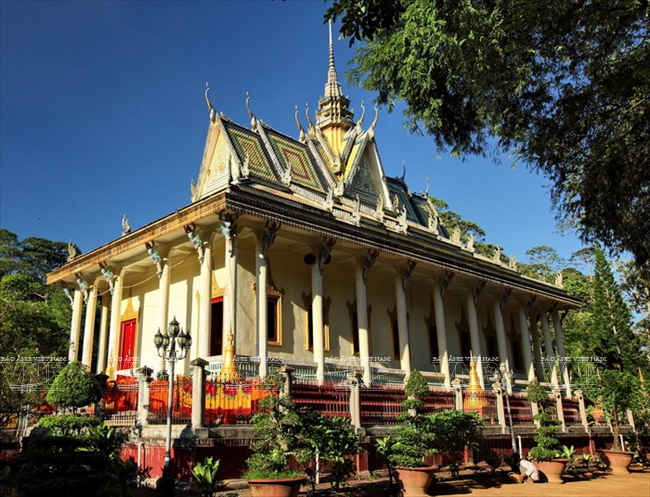
The Khmer pagodas are always built in large areas, surrounded by trees of Dau
(Dipterocarpus alatus), Palmyra palms or green cajuput forests.
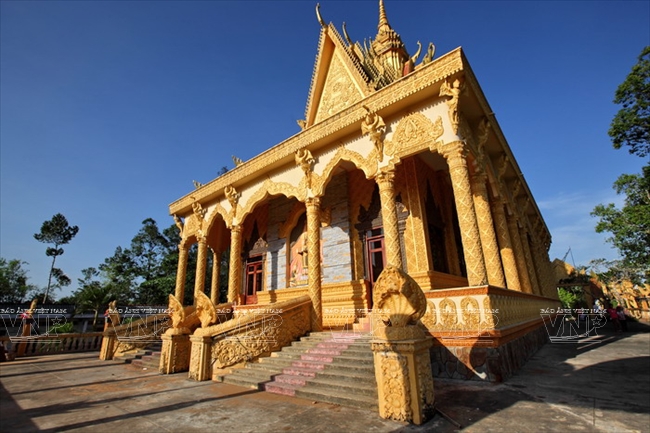
The impressive main chamber.
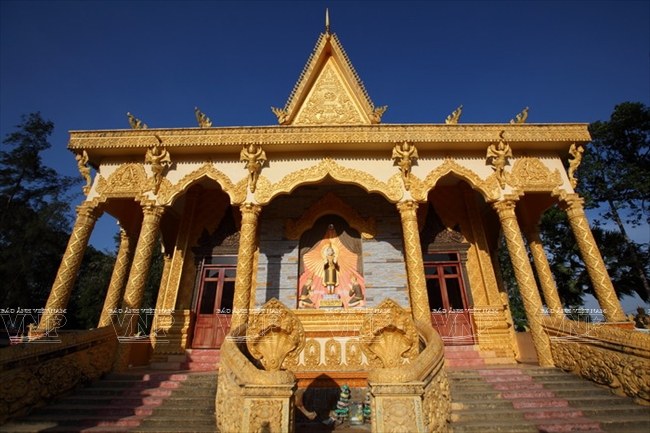
The front of a Khmer pagoda.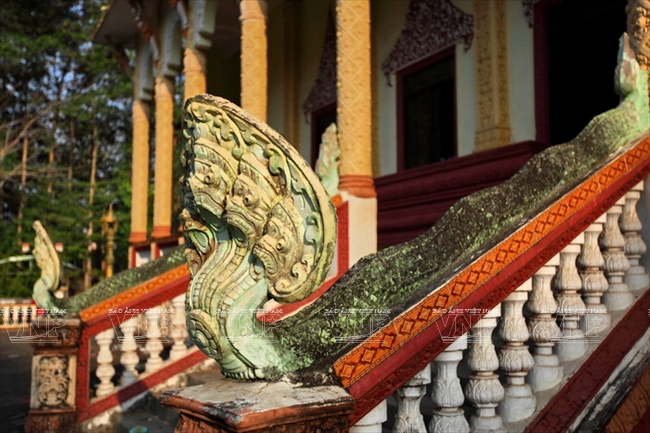
Naga snakes curves on terraces.

Statues of Krud divine birds on the main chamber.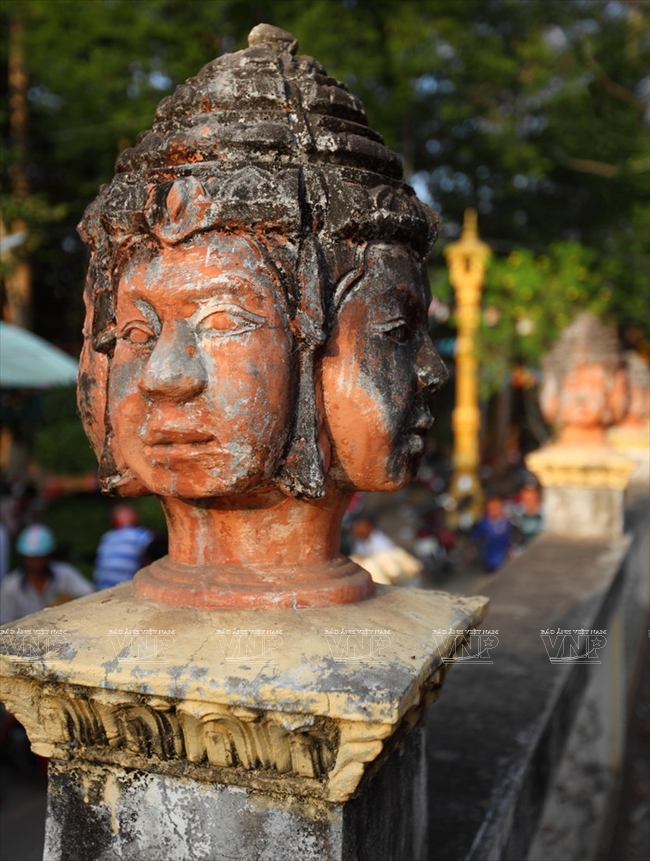
The Bayon head on a pillar of the fence. .
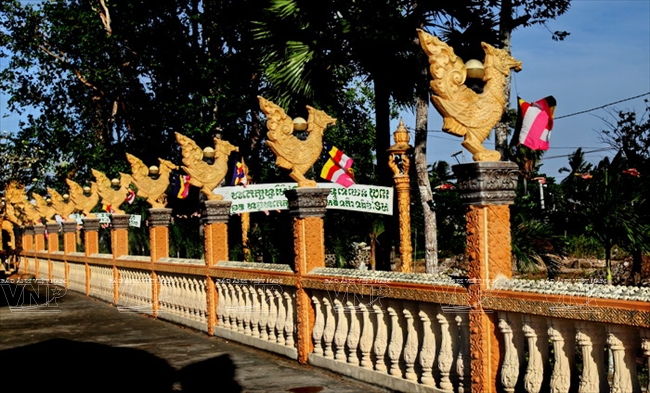
Decorative patterns on the gate and fence.
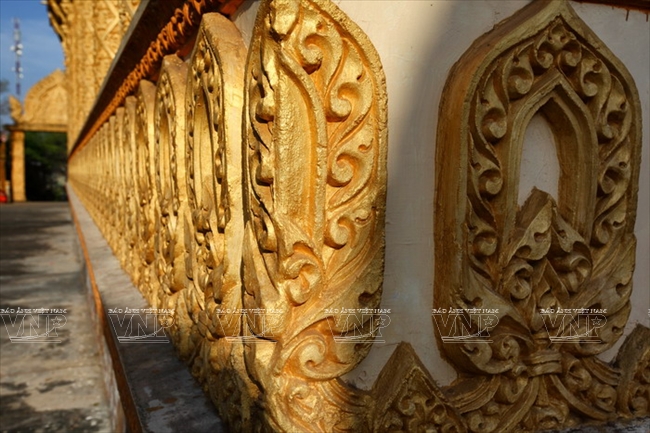
Unique patterns on the wall of a pagoda. .
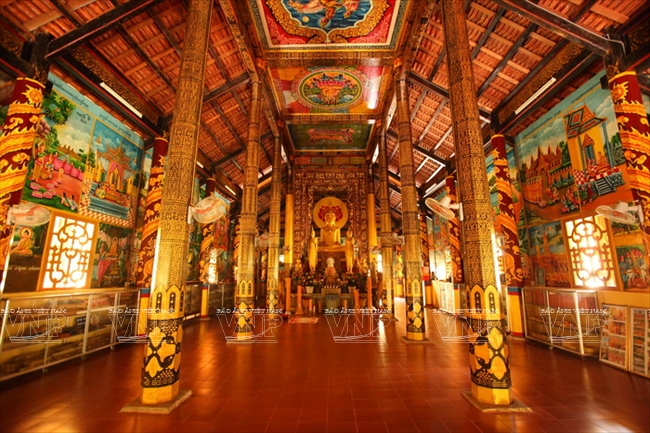
The space inside the main chamber is set simply with an altar of the Buddha.
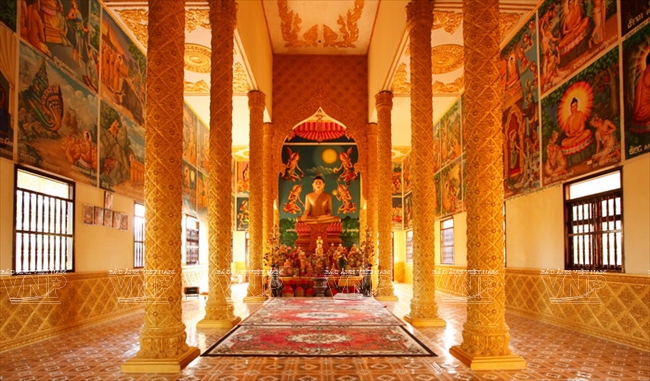
Khmer artisans decorated walls, pillars and doors with reliefs and frescos which depict the life of the Buddha.
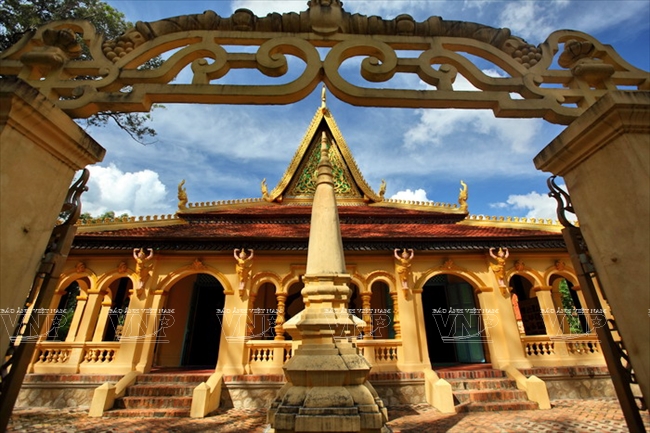
A panoramic view of a Khmer pagoda includes a gate, a fence, a wall,
a main chamber, towers preserving the ashes of dead monks, and Sala. |
An altar in the shape of a lotus flower is placed solemnly inside the main chamber with the largest statue of Buddha and other statues in different postures, expressing the righteousness and generosity of the Buddha. Khmer artisans decorated walls, pillars and doors with reliefs and frescos which depict the life of the Buddha and the life of the Khmer community.
Generally, pagodas are a space of communal activities and traditional festivals of the Khmer people. Through the architecture of the pagodas, the Khmer people preserve the beautiful features of their Buddhist faith and incline them to do good.
Story: Son Nghia - Photos: Nguyen Luan